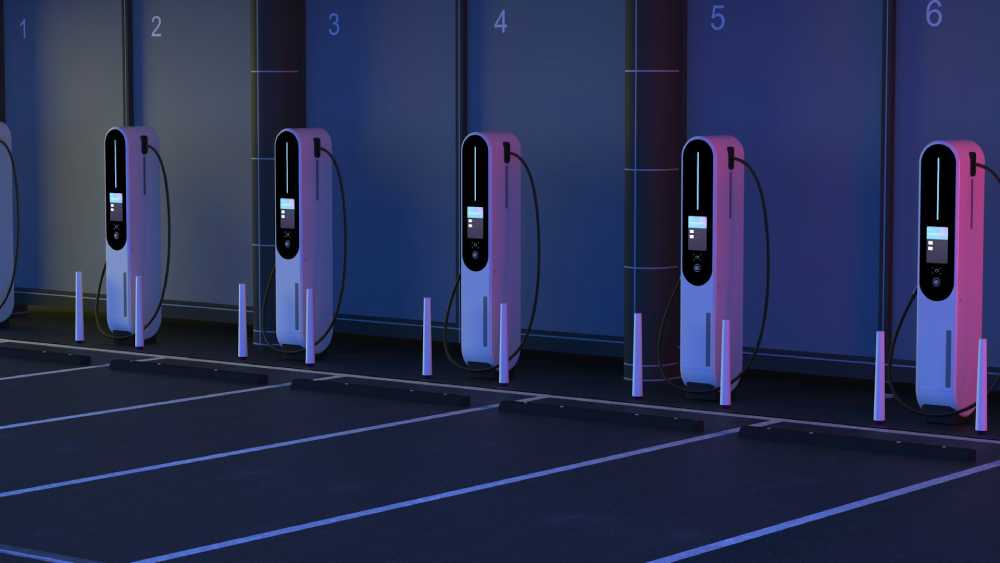
Boosting Fleet Efficiency with Electric Vehicle Charging Stations
Electric vehicle (EV) charging stations offer numerous benefits for fleet operations. Providing efficient fueling options helps reduce operational costs and dependency on fossil fuels. EV fleet charging solutions are an efficient option for businesses aiming to improve their sustainability initiatives and minimize their environmental impact by reducing their carbon footprint.
Moreover, EV charging stations can be seamlessly incorporated into fleet operations, allowing companies to maintain their logistical efficiency while transitioning to greener transportation options.
In addition to cost savings, EV charging stations present a crucial technological upgrade for fleet managers. Traditional fueling methods can be time-consuming and often require detours and wait times at service stations.
By installing dedicated EV charging stations, fleets can significantly minimize downtime and maintain more predictable operational schedules. It improves fleet productivity and provides an edge over competitors still reliant on fossil fuels. Additionally, integrating EV charging stations supports fleet managers in adopting data-driven strategies to monitor and optimize energy consumption, further driving operational efficiency.
Types of EV Charging Stations
Several EV charging stations are available, tailored to different needs and scales of fleet operations. The most common include:
- Level 1 Chargers: These chargers use standard 120-volt outlets and are suitable for low-mileage vehicles. They are the most economical but also the slowest regarding charging speed. It is ideal for plug-in hybrid EVs or small fleets that can afford prolonged charging periods.
- Level 2 Chargers: These require a 240-volt electrical supply and a much faster charging rate, making them ideal for overnight charging or fleets with medium daily mileage. These chargers can recharge an EV more efficiently, usually offering a full charge within a few hours, making them a popular choice for many businesses.
- DC Fast Chargers: These are the quickest chargers, capable of charging an EV up to 80% in 30 minutes or less. They are perfect for high-turnover fleets that require minimal downtime. While they involve higher installation and operational costs, their rapid charging capability can make a significant difference for fleets with intensive daily schedules.
Planning Your EV Charging Infrastructure
Successful implementation of EV charging infrastructure requires rigorous planning. Factors like the number of vehicles expected daily mileage, and charging times must be carefully considered.
Collaborating with experts and stakeholders ensures the design of an optimal layout and seamless integration into existing operations. Identifying prime locations for installation within your fleet operations and ensuring they have the necessary electrical capacity can make a significant difference in smooth operation.
Proper planning also involves assessing the future scalability of your EV charging infrastructure. As your fleet expands and evolves, it is crucial to ensure that your charging setup can easily accommodate additional vehicles without necessitating significant alterations.
Moreover, leveraging innovative charging solutions that distribute power efficiently across various charging stations can help manage energy consumption and avoid potential grid overloads. Engaging with energy providers and securing favorable electricity rates further aids in minimizing operational costs, making the transition to EVs more economically viable.
Cost Considerations and Subsidies
Although the initial investment can be substantial, various government incentives and subsidies can alleviate the financial burden. Evaluating these financial aids and incorporating them into your budget plan will make the transition to EVs more economically viable. Potential incentives include tax credits, grants, and rebates that can significantly offset the costs of purchasing and installing EV charging infrastructure.
Furthermore, the establishment of EV charging stations can result in decreased fuel and upkeep expenses over time, which is a financially sensible choice for numerous fleet managers. Electric cars usually need less maintenance than regular vehicles with internal combustion engines since they have fewer components in motion and do not need regular oil changes.
Over time, the reduction in operational expenses can justify the initial outlay and even generate a return on investment. Thoroughly researching available financial supports and strategically planning your investments can make the transition smoother and more cost-effective.
Environmental Impact
Utilizing EV charging stations has a beneficial effect on the environment as one of its main advantages. Fleet operators have the potential to make a big difference in creating a more sustainable future. The transportation industry dramatically adds to the release of greenhouse gases, making it essential to switch to electric vehicles to reduce their impact.
The adoption of EVs also supports broader environmental initiatives and corporate social responsibility goals. Businesses transitioning to electric fleets gain a competitive advantage by aligning with eco-friendly practices, which can appeal to environmentally conscious consumers and stakeholders.
Publicizing these efforts can enhance brand image and deepen customer loyalty, further incentivizing the shift to sustainability. By contributing to reduced emissions, fleets help combat climate change and benefit public health, aligning with global efforts to create a cleaner, healthier world.
Maintaining Your EV Charging Stations
Consistent upkeep is essential for maintaining the longevity and efficiency of EV charging stations. Fleet managers can avoid unexpected downtimes and maintain smooth operations by scheduling routine checks and promptly addressing any issues.
Typical maintenance tasks include inspecting cables and connectors, ensuring software updates, and checking for physical damages. Consistent upkeep helps maximize the lifespan and performance of charging stations.
Partnering with reliable service providers can further enhance the maintenance process, ensuring that your investment is protected and continues to deliver value over time. These providers often offer comprehensive maintenance packages that cover preventive care, emergency repairs, and system upgrades.
Staying proactive with maintenance also involves monitoring usage patterns and energy consumption data to optimize charging schedules and identify any irregularities that might signify potential issues. By giving importance to comprehensive and consistent maintenance, fleet operators can guarantee the durability and dependability of their EV infrastructure in the long run.

